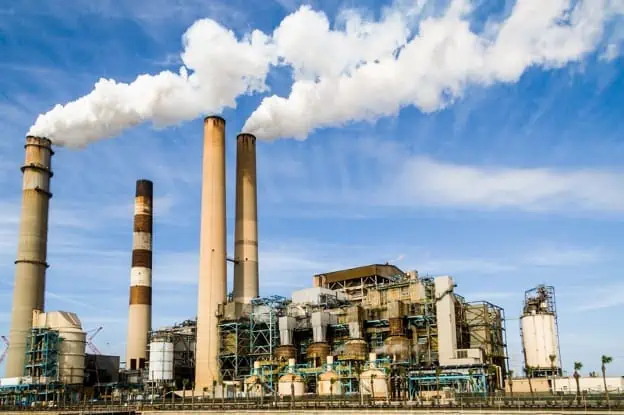It’s hard to imagine a time when the United States wasn’t the global superpower, but it was only eighty years ago that America and its allies were fighting tooth and nail against the Axis powers.
In order to effectively win World War II, America had to mobilize its industrial production at an unprecedented scale.
WWII Tanks, planes, and other military hardware were mass-produced in factories across the country.
Let’s take a look at how America’s industrial production helped turn the tide of World War II.
Becoming an Industrial Powerhouse
The United States had the world’s largest and most productive economy, which was a major advantage in supplying the Allies with weapons and other supplies.
American factories were able to produce more than enough tanks, airplanes, and other military equipment to help the Allies win the war.
Interestingly, America’s industrial production actually decreased during the early years of the war.
This was due to the fact that many American factories were already supplying the British and other Allies with weapons and supplies, so they didn’t have to ramp up production as much as other countries did.
America’s industrial production increased dramatically in the last years of the war, as the country began mass-producing military equipment to supply the Soviet Union and other Allies.
By the end of the war, America’s factories were churning out military equipment at an unprecedented rate.
America’s industrial might was a major factor in winning the Second World War, and it’s something that we should be proud of. It’s a reminder of what our country is capable of when we work together towards a common goal.
Converting Factories to Produce War Machines and Materials
When America entered World War II in 1941, the country’s industrial might was a major asset in the war effort. Factories that had previously been producing consumer goods were quickly converted to produce military hardware, and the output was significant.
In order to transition to manufacturing weapons and hardware, factories had to retool their machines. This process could be time-consuming, but it was necessary to produce the supplies that were needed for the war effort.
The United States also had to import raw materials from other countries in order to keep its factories running. These imported materials included oil, steel, and other metals that were used in the production of military hardware.
In just a few years, America was churning out hundreds of thousands of tanks, planes, and guns, providing a major boost to the allied war effort.
The increase in production also led to an increase in jobs, helping to lift America out of the Great Depression. In the end, America’s industrial strength played a key role in helping the allies win the war.
Propaganda to Encourage Factory Jobs
During World War II, American factories were working around the clock to churn out supplies and weaponry for the Allied forces.
To keep up with the demand, the government launched propaganda campaigns to encourage people to work in factories.
These campaigns emphasized the importance of factory work in winning the war. As a result of these efforts, output increased even further. Some examples of WWII factory propaganda are:
- “If you work in a factory, you’re helping to win the war!”
- “Every bullet that’s made helps to kill a Nazi!”
- “An army marches on its stomach, and we need food to keep them going. That’s where you come in.”
You also might recognize famous propaganda icons like Rosie the Riveter, that encouraged women to join the workforce. Rosie was a reminder that everyone had a part to play in the war effort.
Her campaign ended up being a major success because it boosted morale and encouraged people to work harder, and she became one of the most impactful gendered advertising icons of all time.
Factory workers, male and female, felt like they were doing their part to support the war effort, and this made them even more dedicated to their jobs.
The increase in output was crucial in helping the Allies win the war. Without the supplies and weapons produced by American factories, the outcome of the war could have been very different.
Special Benefits for Factory Workers: Housing, Food, and Healthcare
A company’s most important asset is its employees. A happy, engaged workforce is key to maintaining high morale, reducing turnover, and attracting top talent.
That was one of the lessons most factory owners had to learn during WW2 and quickly.
Some of these benefits included:
Housing: Many factories provided their workers with housing near the factory. This was especially common in areas where housing was in short supply.
Food: Some factories provided their workers with food at a discounted price, or even for free. This was especially important during the war when food was rationed.
Healthcare: Many factories provided their workers with healthcare, either through on-site clinics or by partnering with local hospitals. This was important in keeping workers healthy and reducing absenteeism.
These benefits helped to keep workers happy and motivated, and as a result, productivity increased and absenteeism decreased.
America’s Factories After the War
After World War II, America’s factories were converted back to producing consumer goods. This change allowed for an increase in production and motivated people to work harder.
The result was that more products were available for purchase, and the economy began to grow.
Today, America is still a leading producer of consumer goods, and our factories continue to play a vital role in the economy.
By producing quality products at a fair price, American factories help to keep our economy strong and provide good jobs for our citizens.
America’s industrial might is still evident. We remain the world’s largest economy, and our factories continue to produce a wide variety of products.
While we don’t manufacture as much military equipment as we did during the Second World War, our factories are still a vital part of our economy.
And, who knows? Perhaps one day we’ll need to rely on our industrial might once again to help us win another war.
Let’s hope it never comes to that, but it’s good to know that we have the capability to do it if necessary.
Author

Luke Williams writes and researches for the auto insurance comparison site, BuyAutoInsurance.com. His passions include auto insurance and discussing WW2 history.

